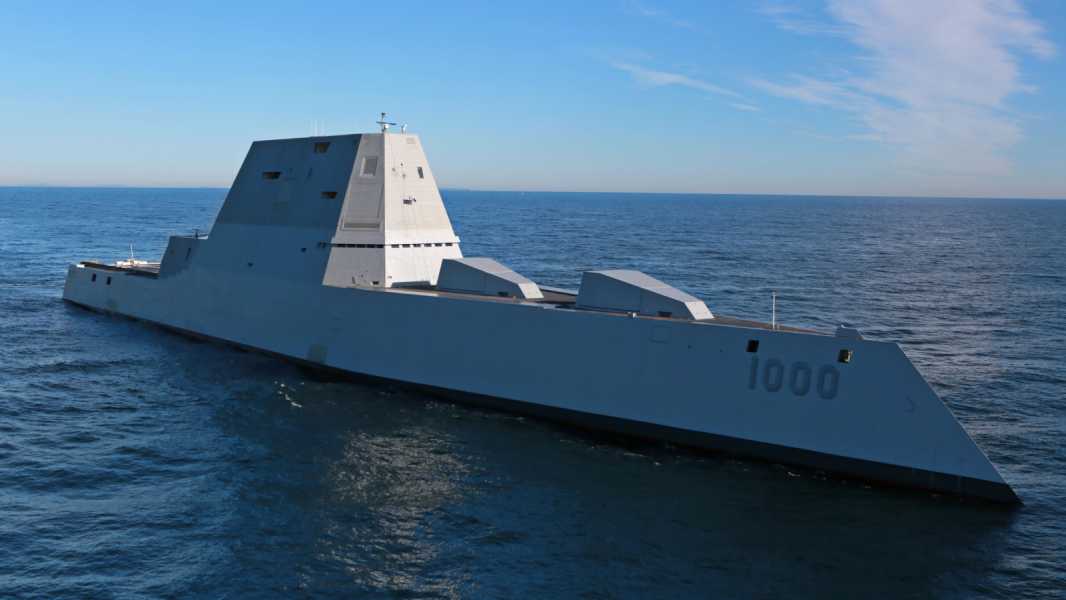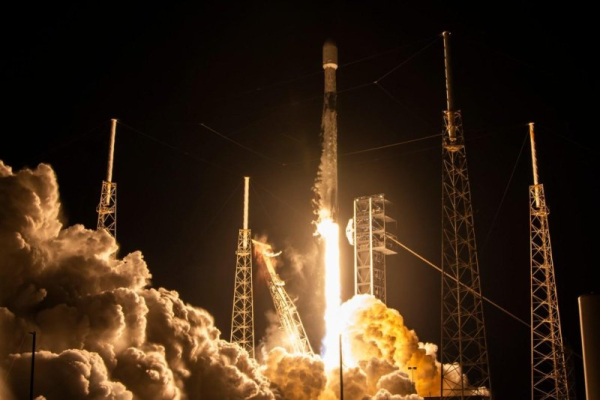
Hypersonic missiles can reach speeds in excess of 3,830 mph and most often fly at altitudes up to 50 miles above sea level. (Image credit: U.S. Navy/General Dynamics Bath Iron Works via Getty Images)
The US Navy's stealth destroyer is undergoing a major upgrade: The USS Zumwalt has now been outfitted with an experimental hypersonic weapons system known as Conventional Prompt Strike.
Hypersonic weapons are seen as the next step in conventional warfare because they can strike targets quickly and with precision at ranges far beyond the capabilities of conventional weapons. A briefing document submitted by a former member of the Massachusetts Air National Guard reported that China tested its DF-27 medium-range hypersonic weapon system last year, AP News reported.
Hypersonic weapons travel at five times the speed of sound, or “Mach 5,” which is approximately 3,830 mph (6,160 km/h).
The Conventional Prompt Strike is launched like a ballistic missile, but then propelled by a hypersonic glide vehicle. This vehicle can reach speeds of up to Mach 8 — about 6,140 miles per hour (9,880 kilometers per hour). Each Zumwalt-class destroyer will be equipped with four launchers, each capable of carrying three Conventional Prompt Strike missiles.
When fired at long range, hypersonic missiles can be intercepted by modern defense systems. Once an incoming missile is detected, the defense system calculates its trajectory and launches an interceptor missile. Hypersonic missiles tend to have some maneuverability, making them difficult to destroy, although most developments so far have focused on maneuverability for accuracy rather than evasion. They rely primarily on their speed to keep detection systems from reacting.
The degree of maneuverability also depends on the missile's position on its trajectory. Any object moving at high speed already experiences significant forces, including air resistance. Its own momentum, keeping it on course, means that achieving even a small turn will require very large forces. Evasive maneuverability does not provide significant advantages; any turn will be accompanied by a loss of speed, making subsequent interception easier.
To overcome some of the drag, hypersonic missiles typically fly at altitudes of up to 50 miles (80 kilometers) above sea level. By comparison, a typical passenger jet flies at an optimal altitude of 5 to 7 miles (8 to 11 kilometers). To achieve the necessary speed, hypersonic missiles need to minimize drag, and air density is lower the higher you go.
The Zumwalt-class destroyers already feature advanced technologies, including electric propulsion systems, wave-piercing hulls, low radar signatures, and automated damage control systems. And with the introduction of Conventional Prompt Strike, they will be able to strike at greater ranges than ever before.

Peter Ray EllisonSocial Links Navigation
Peter is a qualified engineer and an experienced freelance journalist specializing in science, technology and culture. He collaborates with
Sourse: www.livescience.com





